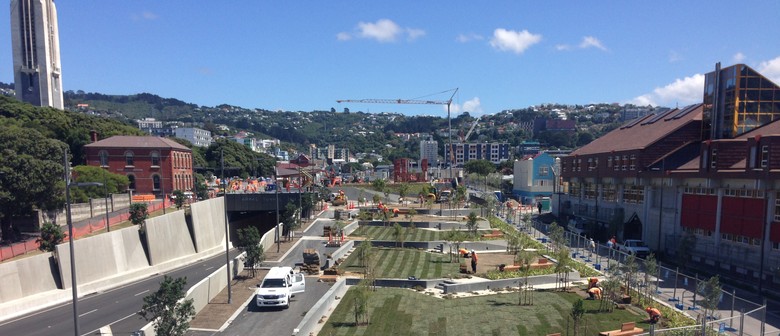It's true there are masses of events being organised for the days, weeks and months surrounding this year's Anzac Day. Every time I open the newspaper, there seems to be an advertisement for another event, exhibition or concert.
Here in Wellington alone, there is the Field of Remembrance at the Botanic Garden -

the official opening of Pukeahu National War Memorial by the Governor-General Sir Jerry Mateparae and Prime Minister John Key, with performances by Louis Baker, the St Paul’s Cathedral Choir and the Tudor Consort Choir, along with the Royal NZ Airforce Band (18 April) -

followed by the opening of the Great War Museum at the Dominion Museum, designed by Sir Peter Jackson and his team at WingNut Films, and open until 11pm for the first two weeks -
the Sound and Light show at Pukeahu National War Memorial Park (every night from 18-25 April) -

the opening of Gallipoli - the scale of our war, a new exhibition at Te Papa -
the Anzac Day street parade, featuring vintage WW1 vehicles (24 April) -
And that's not to mention all the events of Anzac Day itself - the dawn service, the citizens wreath-laying service at the Cenotaph, our local community service, the 11am national service at Pukeahu, the afternoon service at the Ataturk memorial, the outdoor big-screen live broadcast of the dawn service at Gallipoli...
... plus several art exhibitions, the NZSO Spirit of Anzac concert, an Anzac Eve vigil service at the cathedral, even a cricket museum photography exhibition...
... and everything else going on all around the country, as shown on the ww100 website.
Yes, it's easy to feel overwhelmed.
But I also like the fact that so many people are finding so many creative ways to think about war and its impact on society, and what World War One (as well as previous and subsequent wars) have meant to us in New Zealand. I like the fact that some of them are peace vigils, poets for peace and other events run by organisations like Peace Movement Aotearoa, or this exhibition at Thistle Hall on Cuba St, called Remember the peacemakers.
Rather than feeling overwhelmed or overloaded, I've decided to keep an eye out for all these events, but just focus on a few. Some are small but meaningful, like the very short, one or two-line diary excerpts from 100 years ago that Radio NZ has been broadcasting between programmes, Some I have come across by chance, like a display case at Wellington Central Library holding original letters, creased from unfolding and refolding, sent to a young woman from her cousins, fiance and brother (only one of whom survived), all away at war.
A few days ago, I walked through the new Pukeahu National War Memorial Park for the first time (it's not officially open, but was finished ahead of schedule so people have been able to walk through it for the last few weeks). Workers were busy setting up lighting and seating for the opening ceremonies on Saturday, and it reminded me of seeing the same activity going on in the week before Anzac Day 2014 at Lone Pine, Chunuk Bair and the Anzac Commemorative Site at Anzac Cove.
This time last year, I was just setting off for Turkey with a wonderful group of people called the Gallipoli Volunteers.
Soon the 2015 Gallipoli Volunteers will be setting off, along with thousands of people who won tickets in the ballot (including my cousin and other friends). It's going to be an amazing experience for them. But I'm looking forward to Anzac Day here in Wellington. Starting today, when I gave some money and took a poppy from an NZDF man on Cuba St. "Last year I was at Anzac Cove for Anzac Day," I said, and he swapped the hand that was holding the collecting bucket so he could shake mine. "Have you ever been there?" I asked and he said no, but he would love to go one day. I feel very lucky to have been.
 |
| Poppies on the Gallipoli peninsula, April 2014 |























